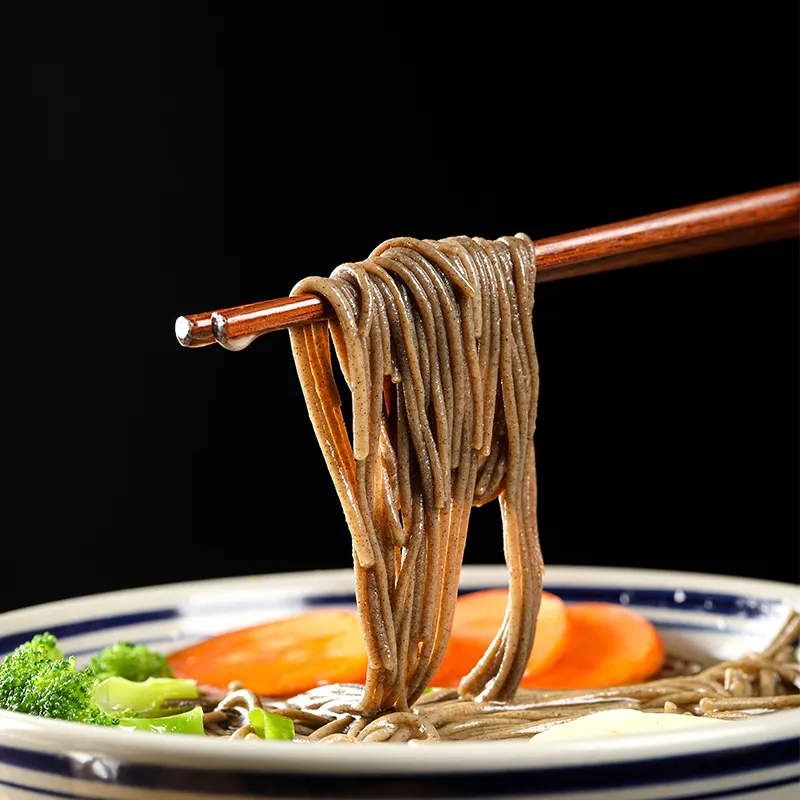Nutrient-Rich Buckwheat Udon for a Healthy Twist on Traditional Noodles
Exploring the Delight of Buckwheat Udon
Buckwheat udon, a delightful twist on the traditional Japanese noodle dish, has been gaining popularity in recent years, celebrated for its unique flavor profile, health benefits, and versatility in various recipes. Unlike the classic wheat-based udon, which is made primarily from wheat flour, buckwheat udon, or “soba,” is crafted from buckwheat flour. This adaptation not only caters to those seeking gluten-free options but also celebrates the rich, nutty taste of buckwheat.
Understanding Buckwheat
Before diving into the culinary aspects of buckwheat udon, it’s essential to understand the grain itself. Despite its name, buckwheat is not a grain but a seed of a plant related to rhubarb. It is gluten-free, making it an excellent alternative for individuals with gluten sensitivities or celiac disease. Rich in protein, fiber, and essential vitamins and minerals, buckwheat is a superfood that offers numerous health benefits. Its unique composition helps regulate blood sugar levels, aids digestion, and can contribute to heart health.
The Art of Making Buckwheat Udon
Making buckwheat udon at home is a rewarding culinary experience. The process is relatively straightforward yet requires a bit of technique to achieve the perfect texture. The primary ingredients are buckwheat flour and water. Some recipes incorporate a small amount of wheat flour to improve the dough’s elasticity, but pure buckwheat udon is entirely gluten-free.
1. Mixing the Ingredients Start by combining the buckwheat flour with water. The key is to achieve the right balance; too much water will make the dough too sticky, while too little will make it crumbly. The ideal consistency is pliable yet firm.
2. Kneading Knead the dough gently until it becomes smooth. The kneading process is crucial, as it develops the texture of the noodles. Be patient; this might take some time.
3. Rolling and Cutting Once the dough is ready, roll it out into thin sheets. The thinner the sheets, the finer the noodles will be. Use a sharp knife to cut the sheets into your desired noodle width. Traditional udon noodles are usually wider than soba.
buckwheat udon

4. Cooking Boil a pot of water and cook the noodles for about 4-5 minutes or until they float to the surface. Freshly made noodles usually require less cooking time than dried ones.
Serving Suggestions
Buckwheat udon can be enjoyed in various dishes, allowing for creativity in the kitchen. Here are a few serving suggestions
1. Cold Noodle Salad Toss the cooked noodles with fresh vegetables, such as cucumbers, carrots, and bell peppers. Add a drizzle of sesame oil, soy sauce, and a sprinkle of sesame seeds for an invigorating dish.
2. Warm Broth Serve the noodles in a flavorful broth made from dashi (Japanese stock), soy sauce, and mirin. Add toppings like green onions, mushrooms, and tofu to enhance the dish.
3. Stir-Fry Incorporate buckwheat udon into a stir-fry with your choice of protein and vegetables. The noodles absorb the sauces beautifully, creating a hearty meal.
Conclusion
Buckwheat udon presents a delightful alternative to traditional udon, combining health benefits with culinary versatility. Whether enjoyed hot or cold, in salads or soups, these noodles provide an exciting and nutritious addition to any meal. With growing awareness of gluten intolerance and a rising interest in healthier food choices, buckwheat udon stands out as a fantastic option for everyone. So, the next time you’re looking for a comforting, wholesome dish, consider trying your hand at preparing buckwheat udon—it just might become your new favorite noodle!
-
Unleash Your Inner Chef with Delectable Italian Pasta CreationsNewsAug.01,2025
-
Savor Health and Flavor: Irresistible Soba Noodles for Sale Await!NewsAug.01,2025
-
Nourish Your Body with Premium Organic Ramen - A Culinary Delight AwaitsNewsAug.01,2025
-
Elevate Your Dishes with Our Exquisite Kinds of Egg NoodlesNewsAug.01,2025
-
Dive into Flavorful Convenience with Our Ramen OfferingsNewsAug.01,2025
-
Discover Exquisite Types of Naengmyeon and Chilled Soba NoodlesNewsAug.01,2025
-
Is Whole Wheat Pasta Healthy?NewsMay.30,2025
Browse qua the following product new the we

















































































































